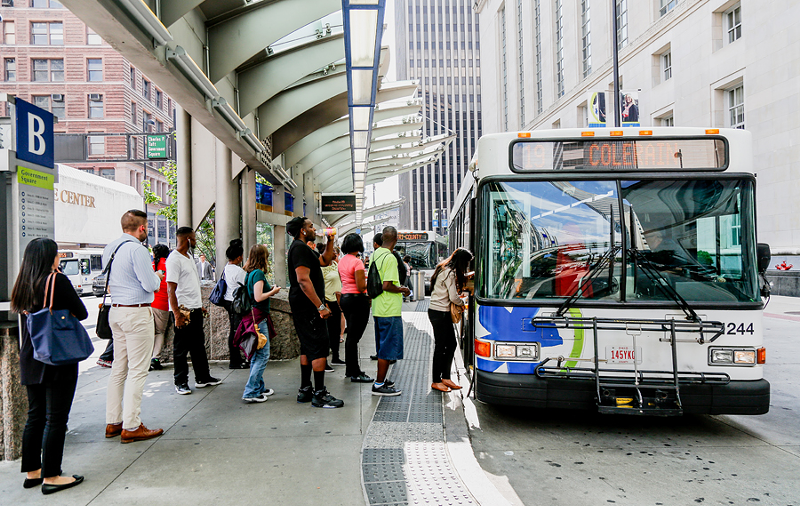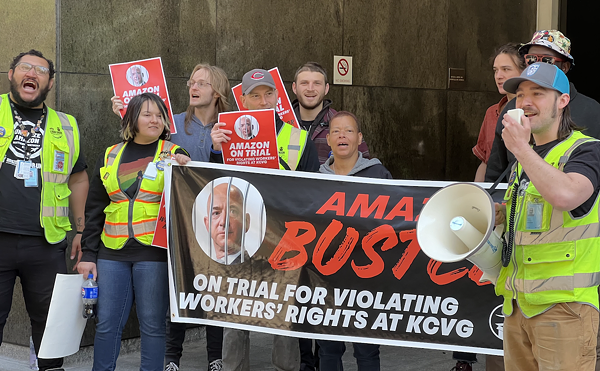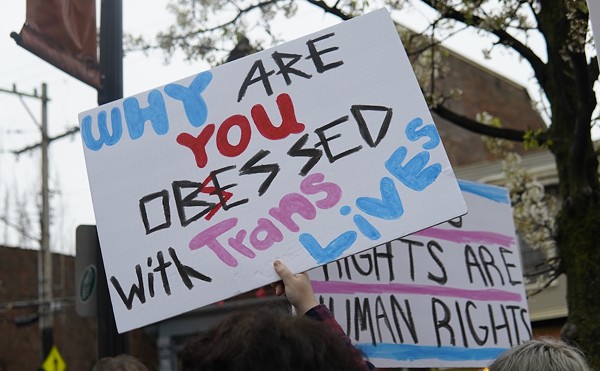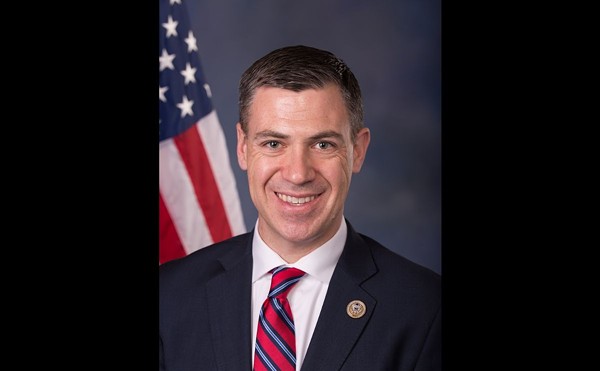
Hamilton County Commissioner Todd Portune wants one transit authority to rule them all — a system that spans three states, eight counties and more than 200 local governments. But big roadblocks stand in the way, including a tangled knot of seven existing transit authorities, various funding sources and state, county and municipal governments.
“We need to have one operating transit authority or commission, so that if I live in Warren County and I want to get to the airport, I can buy a ticket and get there directly without having to stop,” the county commission president, a Democrat, says.
Greater Cincinnati’s transportation woes have been well-documented. According to a 2015 report by the Cincinnati Chamber of Commerce, the Greater Cincinnati metro area ranks last among its peer cities in the share of jobs in neighborhoods accessible by transit. The area’s two largest transit agencies — Southwest Ohio Regional Transit Authority (SORTA) and Transit Authority of Northern Kentucky (TANK) — face serious budget crises and declining ridership. SORTA’s struggles have received the brunt of the media’s attention, but TANK has also had to cut several routes recently.
Next year’s proposed sales tax levy in Hamilton County would stabilize SORTA and possibly improve transit service. But Portune has asked the transit authority to hold off on passing the hat among taxpayers, worrying that a tax hike will jeopardize funding for his future regional authority. He wants the beleaguered agency to wait until at least 2020, by which time it will have accruedmore than $44 million in operating and capital budget deficits.
This isn’t Portune’s first call-to-action on regional transit. In 2008, he helped rewrite the original 1968 charter, charging SORTA to expand and enhance its network. Critics say SORTA didn’t make much progress over the next several years — inaction that makes Portune wary of next year’s levy, even as a stop-gap measure for his regional system.
SORTA Board Chair Jason Dunn understands these frustrations, but also notes that high turnover on the SORTA board coupled with a severe drop in annual ridership crippled the agency’s ability to plan long-term.
“If we wait three years, there will not be a system to build upon to support a regional system,” Dunn says. “We’re focused on sewing up the core. Once we are shored up, then I think we can move forward to a regional system.”
Some local transit advocates side with SORTA, saying the time is now to make transit options better in Greater Cincinnati.
“It sounds great on paper, something that if the plan was ready today, I wouldn’t oppose it,” says Cam Hardy, president of a Cincinnati-based public transit group called the Better Bus Coalition. “But this man has been in office for almost my entire lifetime, and I don’t want to continue to harm bus riders while we wait for (Portune’s) plan to come into fruition.”
If Portune’s mad gamble pays off, Greater Cincinnati could possess a 21st-century transportation network rivaling the nation’s best. But the risks are high.
The hypothetical body would govern public transportation in Hamilton County and its seven neighboring counties, absorbing SORTA, TANK, the Butler County Regional Transit Authority (BCRTA) and several on-demand, dial-a-ride bus services. Based on current ridership data, the regional transit authority could expect around 20 million annual riders.
That estimate relies on the existing networks, which Portune wants to expand. Commuter rail, light rail or bus rapid transit (BRT) would connect the major population centers — Cincinnati, Hamilton, Covington, etc. — while busses would move people around within those cities.
Metro, SORTA’s bus system, relies on an outdated 0.3 percent earnings tax within the city of Cincinnati, even though jobs and riders have fled to outer-ring suburbs like Blue Ash. While poor transit access has hurt the local economy, it has also made public transportation more salient politically.
John Schneider, who was the campaign manager for MetroMoves, believes the region is finally ready to expand the system via new options.
“I can’t tell you how many people have told me since 2002 that they didn’t vote for MetroMoves, but if light rail ever came up on the ballot again, they’d be really interested,” Schneider says.
Leaders in other counties are also increasingly interested in expanding transit options. Some, like Dearborn County Commissioner Kevin Lynch, think communities need reliable public transportation to attract young professionals. Others see it as an economic growth engine.
In Butler County, BCRTA annual ridership has skyrocketed from 10,000 to 579,700 over the last 10 years.
“We have to look at a bigger vision of how we’re going to support economic development in this region,” says Dan Bates, Hamilton Chamber of Commerce CEO, “and I think public transportation is a major piece of that.”
While a regional transit system will need grassroots support, consolidating the region’s seven existing transit authorities will not be easy. Add three states’ respective policies and politicians to the mix, and the task becomes herculean. The Port Authority of New York, which runs trains across the Hudson River into New Jersey, was only possible through an act of Congress, and it only spans two states.
“All of the systems in this region, they all have different cost structures, different overhead considerations, different labor agreements,” says Andrew Aiello, TANK’s general director. “Until you put all that on the table and figure out how you would approach those questions, it would be hard to tell if there’s significant efficiencies to be gained.”
If municipal, county and state barriers do not stop Portune’s grand proposal, state funding mechanisms, or lack thereof, could deal the final blow. Ohio and Kentucky rank near the bottom in transit spending per capita, and the latter prohibits local-level sales tax increases. TANK has to ask its counties for money — rather than drawing from an independent, regional funding source — which hinders long-term planning and big capital projects like a downtown-to-airport rail line.
Further, commuters with little transit experience are less likely to adopt it later in life, and the plan’s rural counties — Clermont, Warren and Dearborn — lack robust transit networks. Clermont County Commissioner Ed Humphrey says his support will depend on the funding mechanism.
Rural voters might not be the only skeptics. A 2015 UC Economics Center study revealed that only 3.7 percent of Hamilton County commutes via Metro. Furthermore, according to a poll recently released by the Cincinnati Chamber of Commerce, only a narrow majority of the county supports a 0.5 percent sales tax.
These barriers don’t discourage Portune.
“This is where we need to go as a region,” he says. “We can all naysay and critique out of the gate, or we can work on trying to make something like this happen without defeating it before it ever begins.”
The longtime politician at least has a friendly political climate. Newly elected Denise Driehaus gives Democrats control over Hamilton County for the first time in a decade, and the region’s business community is united on the need for reliable public transportation.
Portune’s best shot might be to first combine SORTA and TANK and link the region’s largest urban centers. Transfers between the two systems are already free, and some routes overlap downtown. That’s something Portune says he’s open to as a starting point.
Whatever plan emerges, it seems likely Portune will be the one pushing it. Only counties can create transit authorities, and he is the only commissioner advocating comprehensive reform.
“This is our steamboat moment,” Portune says, referring to Cincinnati’s infamous rejection of railroads in favor of river travel. “At the time, Cincinnati was the sixth, seventh largest city in the country. Now we’re the 65th largest city in the country. It’s not about size or population, but this definitely is about growth and quality of life and having an economic future for future generations, and it all comes back to transportation.” ©





